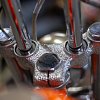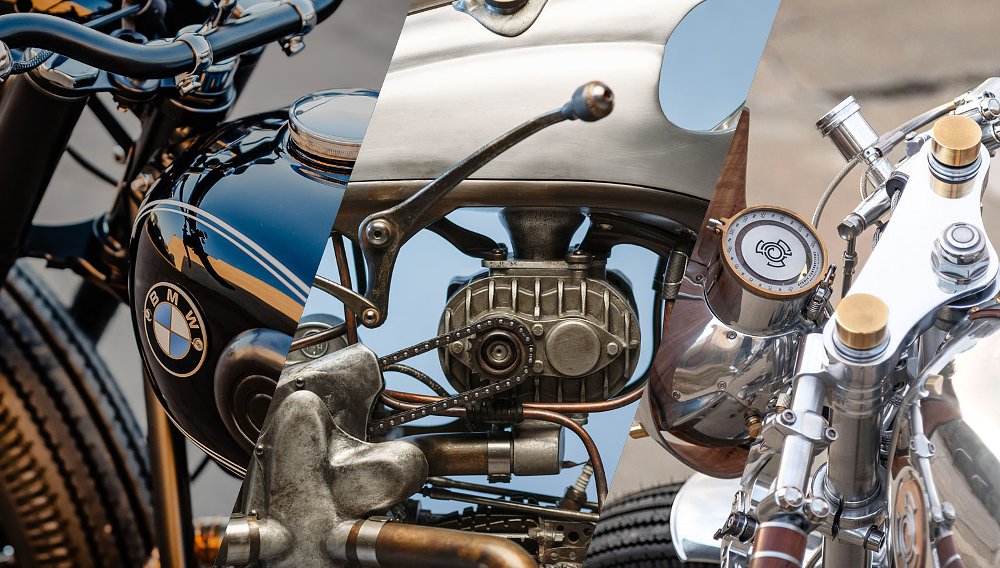For this month's roundup, I've assembled a trio of custom chops from around the world that were all built to satisfy long-term goals.
First up are two Shovelhead builds that are worlds apart by Aussie James Sinclair and Sami Greystone from the UK. Al Hackel then shares the story of his one-of-a-kind chopper that's sporting an engine made up of aircraft components. And to mix things up a bit and respond to a reader's question, I've added a fourth bike into the mix in the form of a restomod ADV from Spain's Bolt Motor Co.
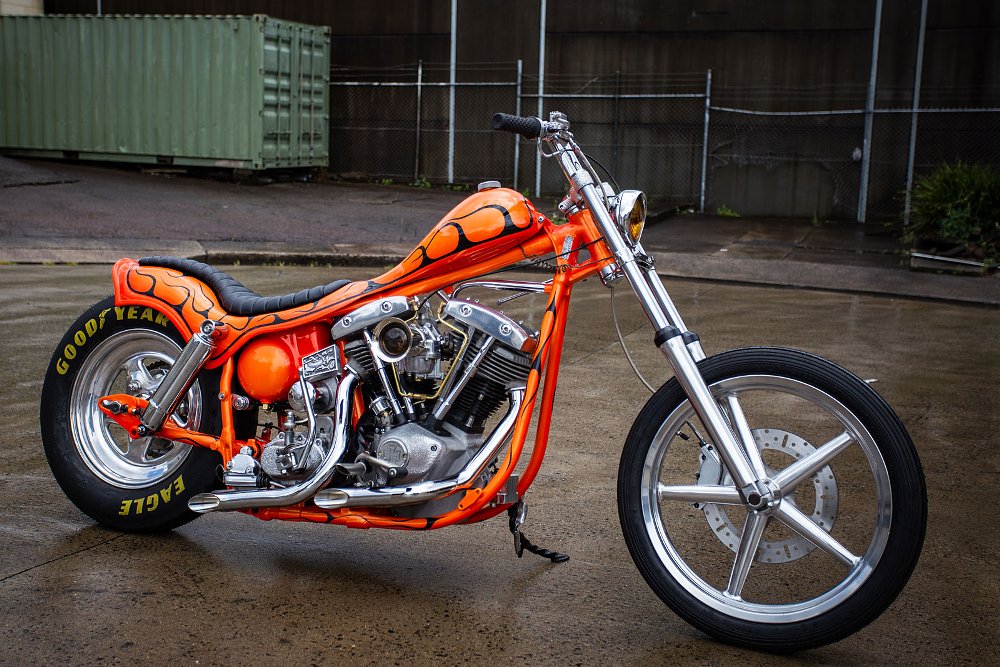
Spread Cheese Fabrications '73 FX1200 Shovelhead
Sydney-based James Sinclair has been building bikes for a decade and a half. During that time, he's pieced together an impressive portfolio of builds, which includes motorcycles for the latest Mad Max "Furiosa" movie. Along with building custom motorcycles, James fabricates unique parts and accessories through his Spread Cheese Fabrications (YouTube) workshop.
"This bike started out as a mostly stock '73 FX1200," says James. "I wanted to build a vintage chopper-styled bike and I knew I wanted it to be a Shovelhead." James acquired the donor for this build from an old boss and wasted no time rebuilding the 50-year-old V-twin. As things went back together, he gave its performance a bump with the fitment of Evo flywheels and crank, 80-cubic-inch high-compression pistons, and an Andrews cam grind.
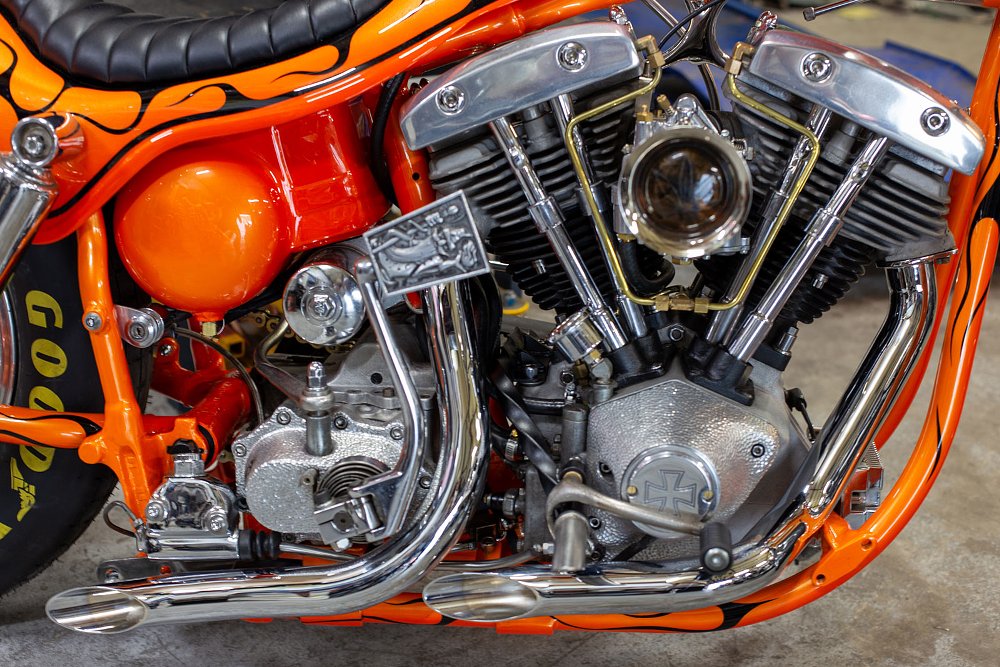
The tone was set for this project when James shoehorned a drag-style Weld Pro Star rim wrapped in Goodyear Front Runner Racing rubber into the frame. Since James wasn't pulling any punches with his choice of rear wheel, it was decided that a stock fuel tank simply wouldn't do. So he built something truly unique.
Inspired by the artwork of low-brow artist Russel Murchie, James set out to create a motorcycle with smooth-flowing lines like the strokes of a paintbrush.
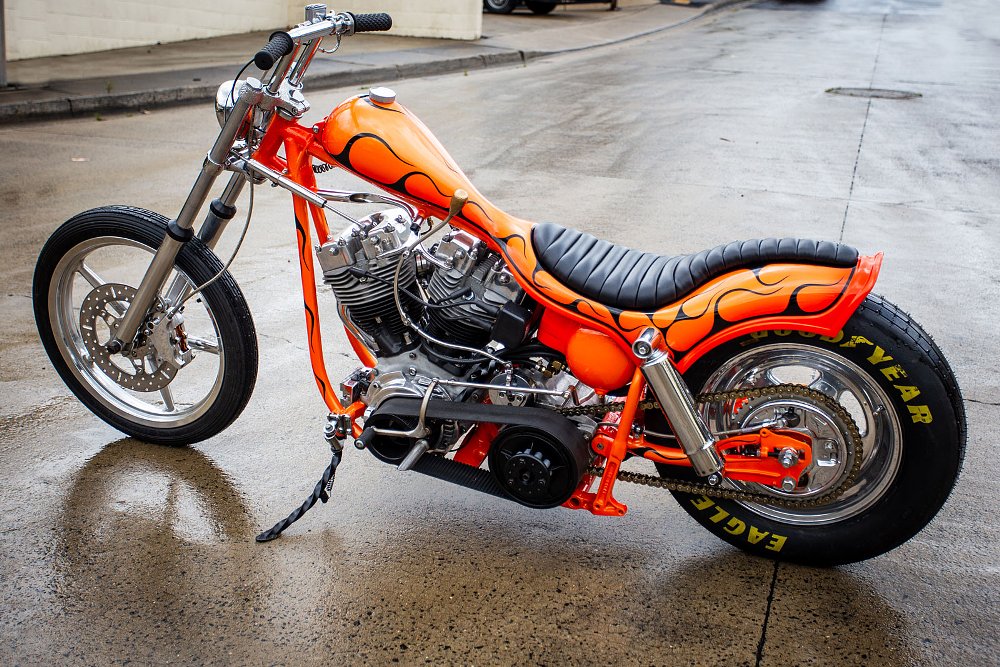
"I handcrafted an aluminum 'Tracey bodyworks' inspired one-piece fuel tank and tail," James says. "I estimate there were probably 200 hours in shaping the seven pieces of aluminum that make up the body."
Working from a wire frame buck, he cut templates in flat sheet metal before using traditional metal shaping tools and techniques to mold the body. For an even more stylized finish, he then used a bead roller to flare the edges of the tail unit and upholstered a one-off Cobra-styled tuck-and-roll seat.
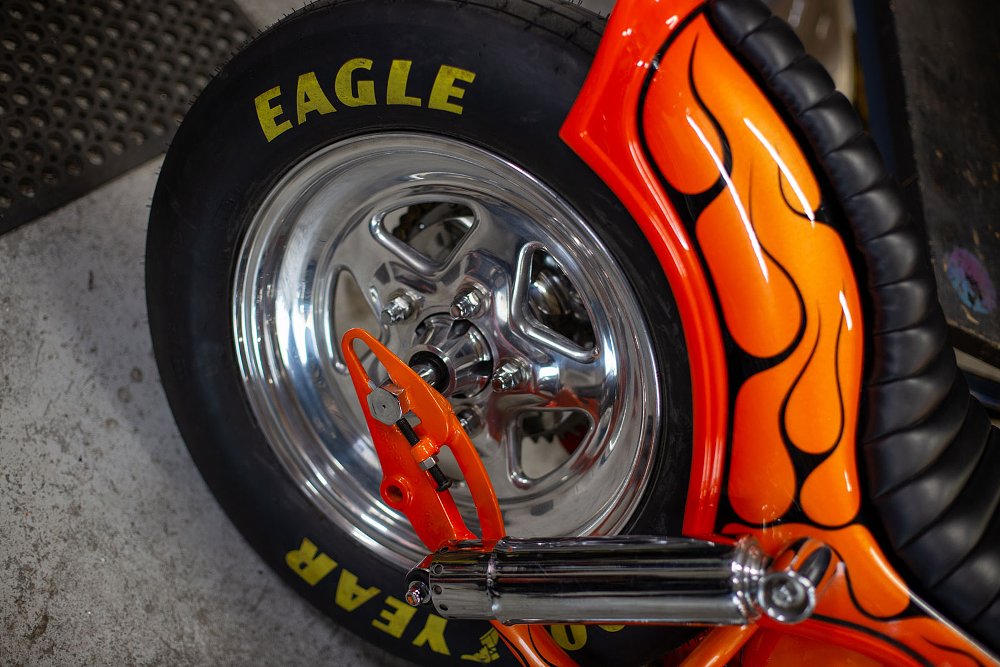
To give the wild new bodywork a suitably unique podium to sit upon, James modified the frame. Along with smoothing all of the welds, he hollowed out a window in the frame neck and installed a chrome-plated "country bar" that is removable to make fitment and removal of the engine easier (it's a Troublehead, after all). Sitting within the frame there's also a custom-made oil tank and battery case finished in the same hi-vis metallic orange as the rest of the bike.
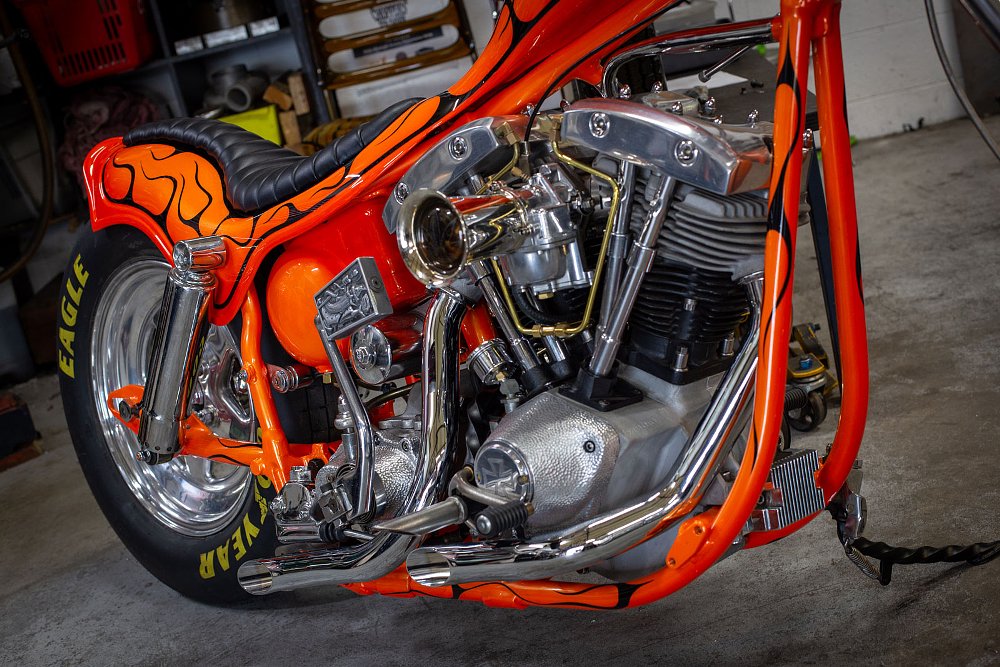
The complete list of work done here goes well beyond what's already been mentioned and almost everything you see was made by James' hands. However, what I like most about this wild ride is that James has worked hard to keep it functional. It may not be the best-handling motorcycle on the street, but I've no doubt it puts a bigger smile on his face than any modern Harley could.
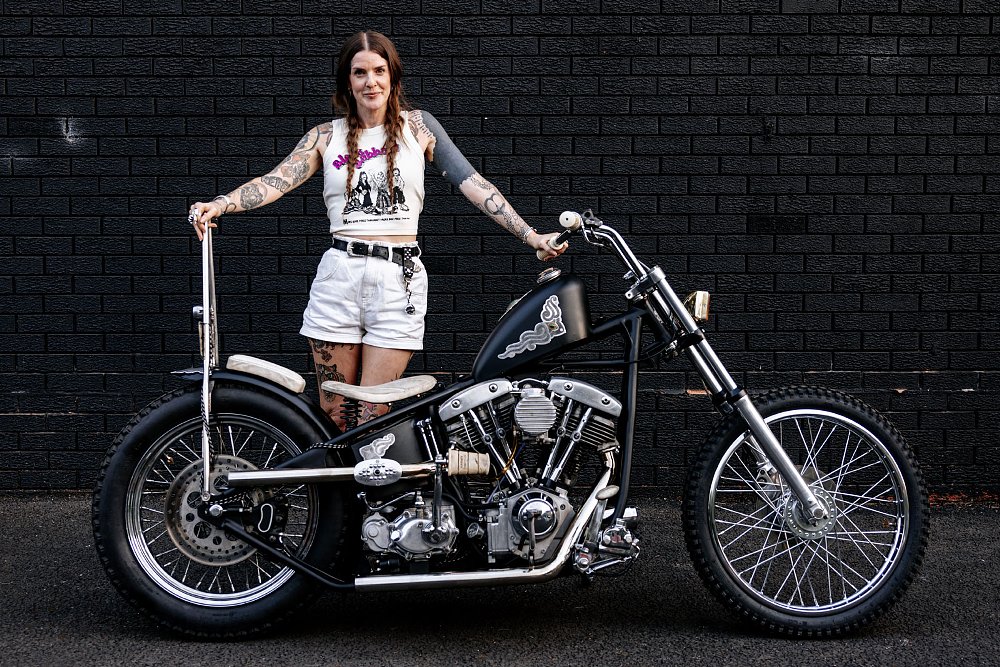
Sami Greystone '75 Shovelhead
UK-born illustrator and tattooist Sami Graystone (Instagram) grew up trackside watching her dad compete in stock car race events. Despite being surrounded by all manner of vehicles, she was drawn to the raw mechanical and visceral experience of riding a motorcycle.
"I wasn't from money, so as soon as I got my university loan through at 19, I used it on bike lessons and to purchase an old Yamaha SR125. I traveled up and down the UK on that bike, through rain, wind, and snow, buzzin' all the way," she recalls. "I've since owned and ridden plenty of bikes, whatever I could get my hands on for my tight budget. Sometimes I would have to choose between petrol or food; petrol often won."
Owning a Harley had always been on Sami's bucket list, but after a nasty accident at the fault of another driver, her dream went on hold. "In 2016 a car pulled out on me while I rode to town. I had severe injuries including a shattered pelvis. The recovery lasted well into six years. It's been brutal, but there was never any doubt I'd be riding again."
Staying true to her word, Sami is back in the saddle now, and with her partner's help, she's built her dream bike.
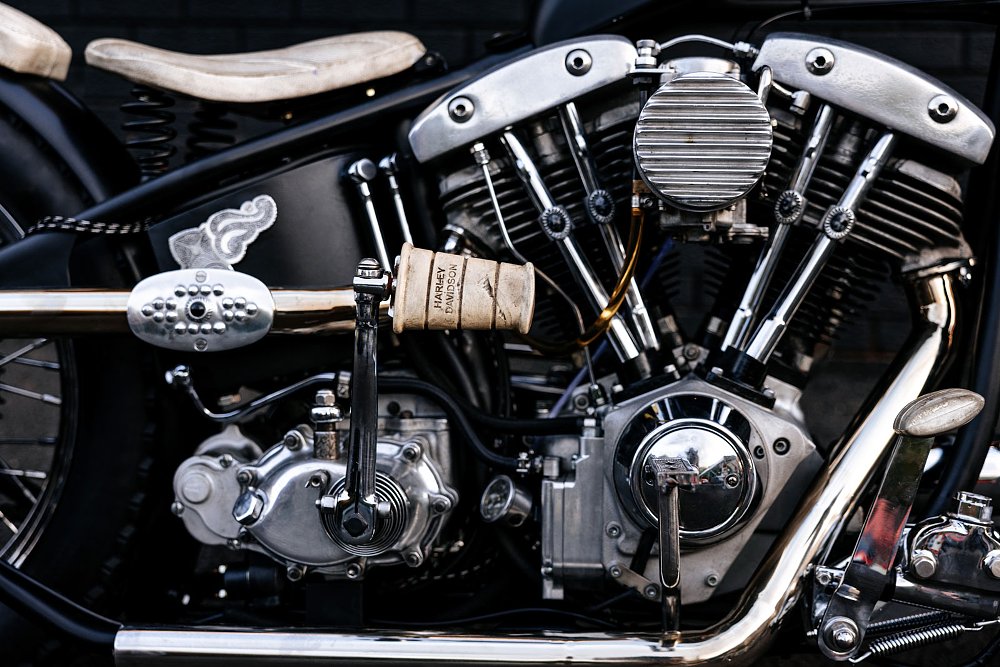
Sami's Harley is built upon a '75 Shovelhead platform. Her partner, Chris Paton, used the motor in one of his previous projects so she knew it was a sound starting point. Unlike her previous project bikes, Sami moved away from the stretched-out '70s chopper style, instead choosing to build something with tighter proportions that was less physically demanding to ride on her trips around the Welsh countryside.
With Chris' help, a frame was pieced back together to house the V-twin. A stock Shovelhead front end went in for the right stance and backswept T bars were installed to complement the look. Next, they added a Frisco-mount Sportster tank, fabricated a set of short exhaust pipes, and relocated the footpegs higher to suit Sami's proportions. In the back sits a ribbed fender, short sissy bar, Motone tail light, and a Biltwell solo saddle and matching passenger pad.
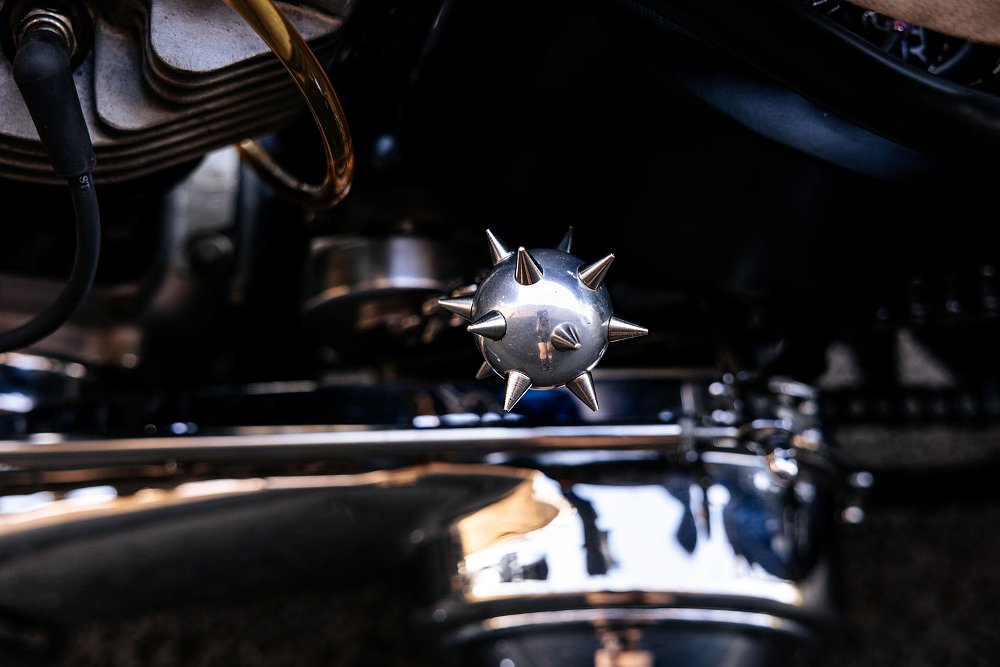
Additional accessories include pushrod and exhaust covers from Unicorn Flakes and a Demon Lung flail shift nob for the jockey shifter. Cloth-covered wiring and a spattering of well worn secondhand parts, along with the handmade alloy embellishments, bolster this Shovelhead's vintage look.
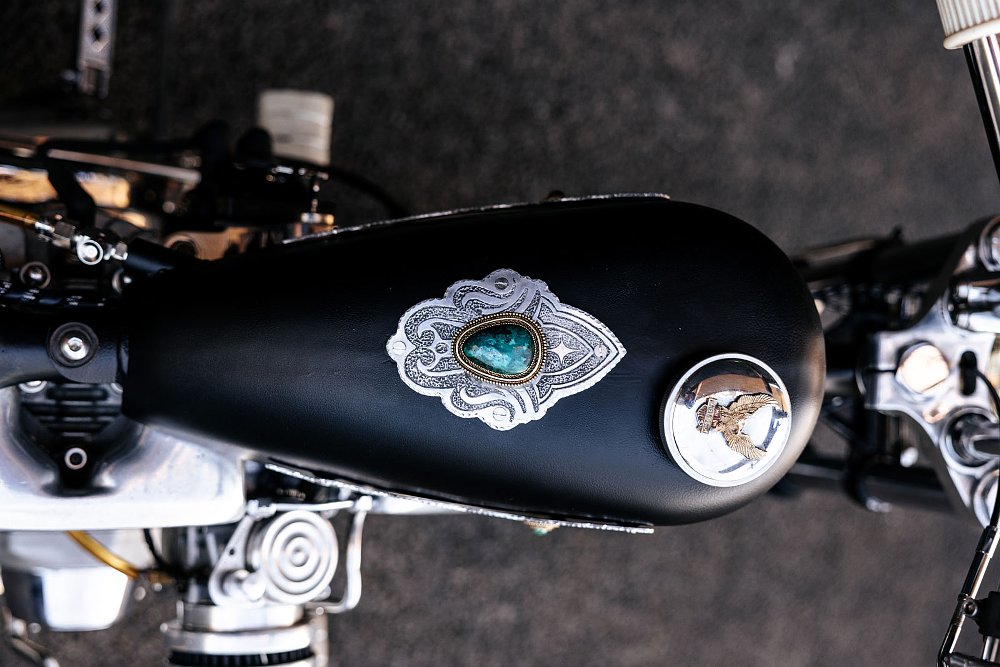
"Aesthetically, I was inspired by old leather boots, with metal toe and heel tips. I've tried to recreate that feel by making a leather effect paint texture and I engraved aluminum panels, which are set with malachite stones. They are said to heal, protect, and filter out negative energy and encourage positive change," Sami explains.
Of all the work completed, she says it was the paint that was most challenging. She opted to do the job herself, and Britain's extended cold and wet winter this year made the task a real challenge. After several attempts, she's still not 100% happy with all of it but she's hoping a bit of time exposed to the elements will help fine-tune the finish.
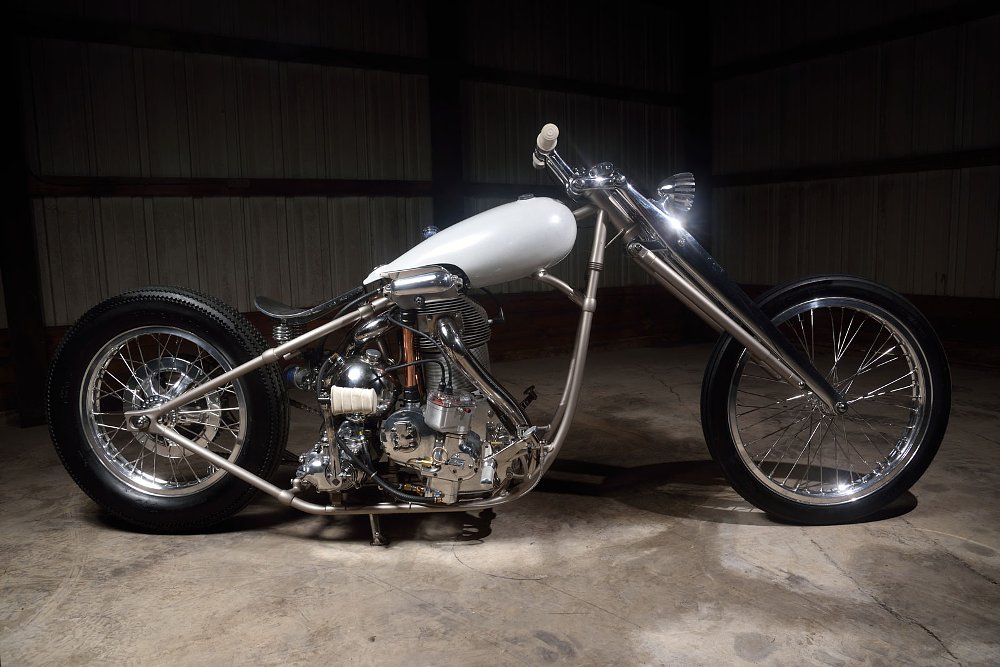
Al Hackel's 2023 Hackel-Wright 98 ci
Al Hackel is a machinist who runs a fab shop out of a barn behind his home. He's aspired to build a Knucklehead-powered custom for years, but the idea always lost out to tool purchases for his business. Luckily, at some point he realized that with his skillset and the tools at his disposal, he could simply build something himself, for a fraction of the cost. That is without doubt an ambitious undertaking, but for someone with Al's skillset, it was an entirely feasible proposition.
Al's Hackel-Wright custom, or as I like to call it, the Chopper Chopper, is powered by a 98-cubic-inch single-cylinder engine. The bottom end is one of the only parts of the whole bike Al hasn’t built himself. It's a 1947 four-speed assembly. As for the rest, it's an entirely custom-built concoction.
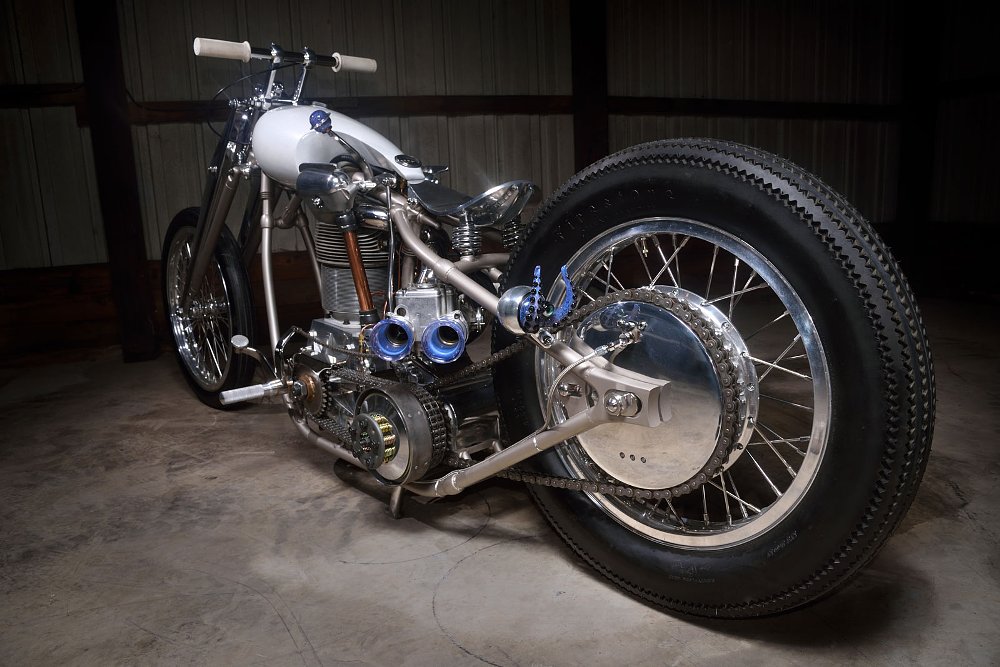
"The cylinder for the engine comes from a Wright R975-46 radial engine out of a Piasecki Hup III retriever helicopter. It has a five-inch-by-five-inch bore and stroke for 98 cubic inches," Al explains. "The piston comes from a Continental O-470 aircraft engine. I made a five-piece crankshaft similar to a Harley Big Twin, only bigger. The rod has a split big end with bearings from a Volvo B20. The cam is made of S7 tool steel and ground by Justin Leineweber. The timing set comes from an SBC. It uses BBC roller lifters. The oil pump and magneto are driven by Baisley high-performance oil pump 2:1 gears. The overall architecture is very similar to one cylinder of a V8 engine. The cases were machined from a few large billets of 6061."
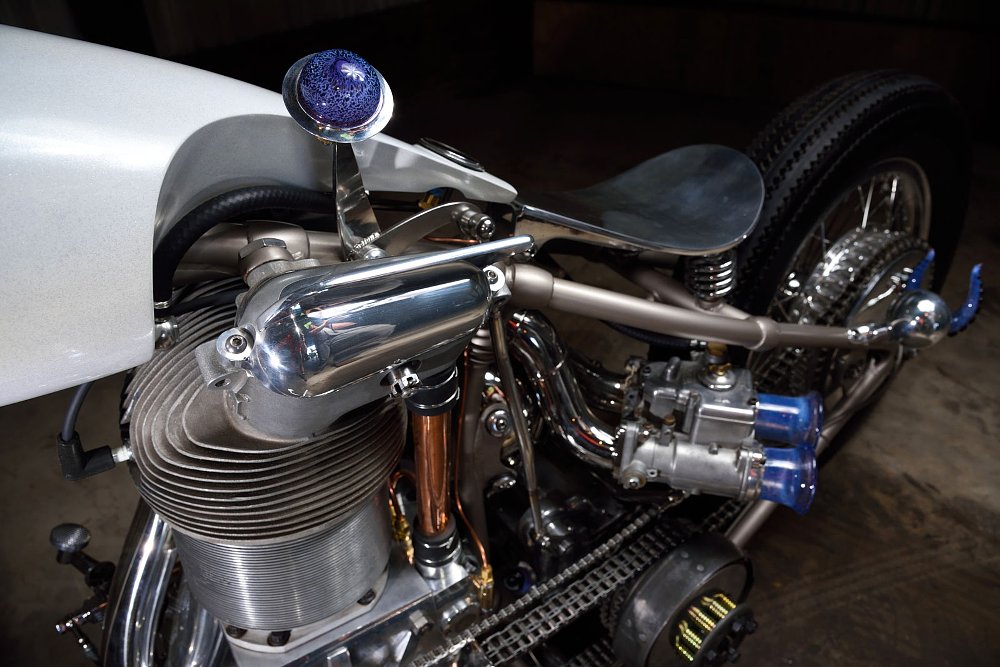
As for the rest of the bike, it is almost entirely made from billet aluminum or tubular steel. All of the parts were designed and machined by Al, including the 6061 alloy rear hub and drum brake assembly. Al modeled it off a Model A Ford Rocky Mountain brake drum which he explains was "a kind of rare option that was supposed to cool better for some of the more mountainous regions of the U.S." Al retrofitted the nine-inch drum with brake components from a 2006 Toyota Corolla to make sure the only brake on the bike provided ample stopping power.
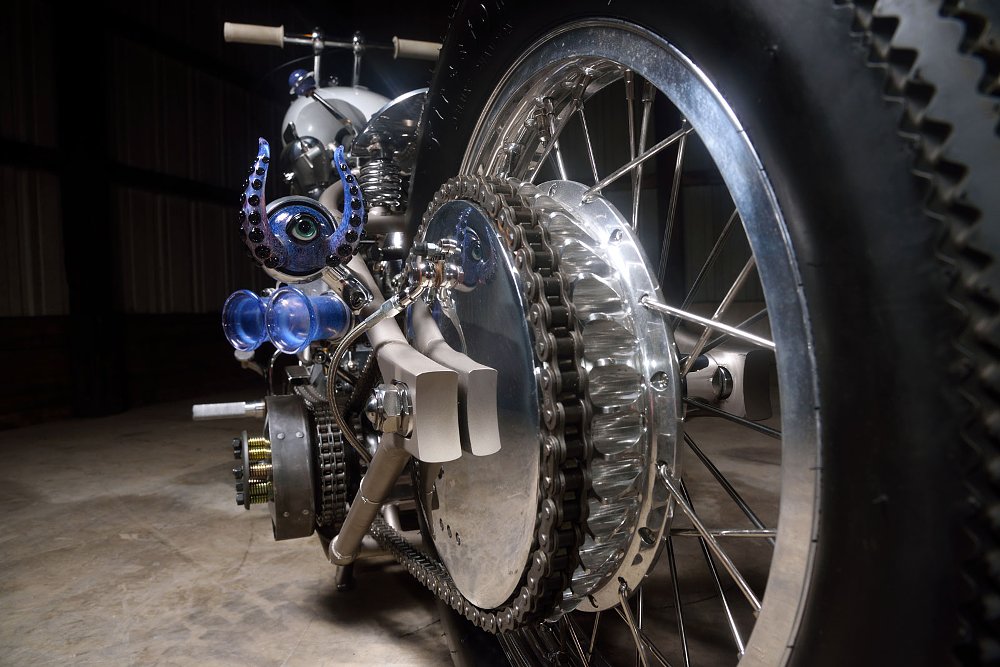
The bike's front fork has been styled after Vincent's girdraulic forks, although eight inches longer; the springs are housed in tubes behind the fork legs. The frame is a one-off design. It uses lugs where welds would usually be. This has helped him hide the joins and give it the look of a brazed frame. The fuel tank is hand-shaped 5052 aluminum, notched to accommodate the intake system, and capable of carrying 2.5 gallons of 100LL aviation fuel, which is required to run the engine built with aircraft components.
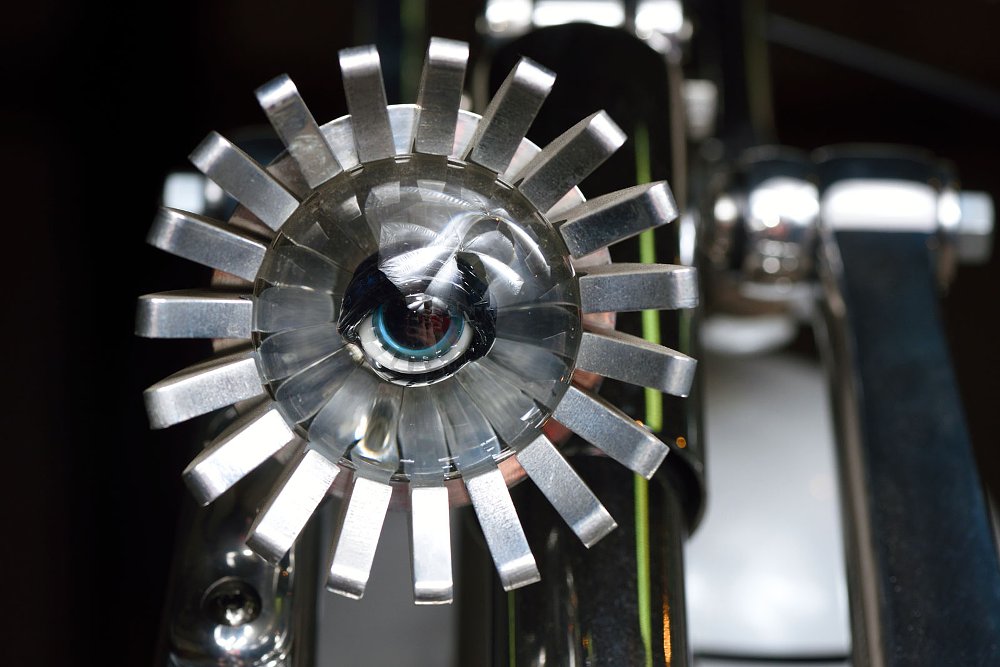
Al's style guide for the build was retrofuturism. For those unfamiliar with retrofuturism, think Jetsons or 1960s American cars from the jet age. To achieve this, he's used plenty of round geometric shapes throughout the build and a balanced mix of subtle tones and polished parts. The icing on the cake, though, are the alien-looking, hand-blown glass brake light, headlight, velocity stacks, shifter knob, and speedometer by artisan Jesse Briggs.
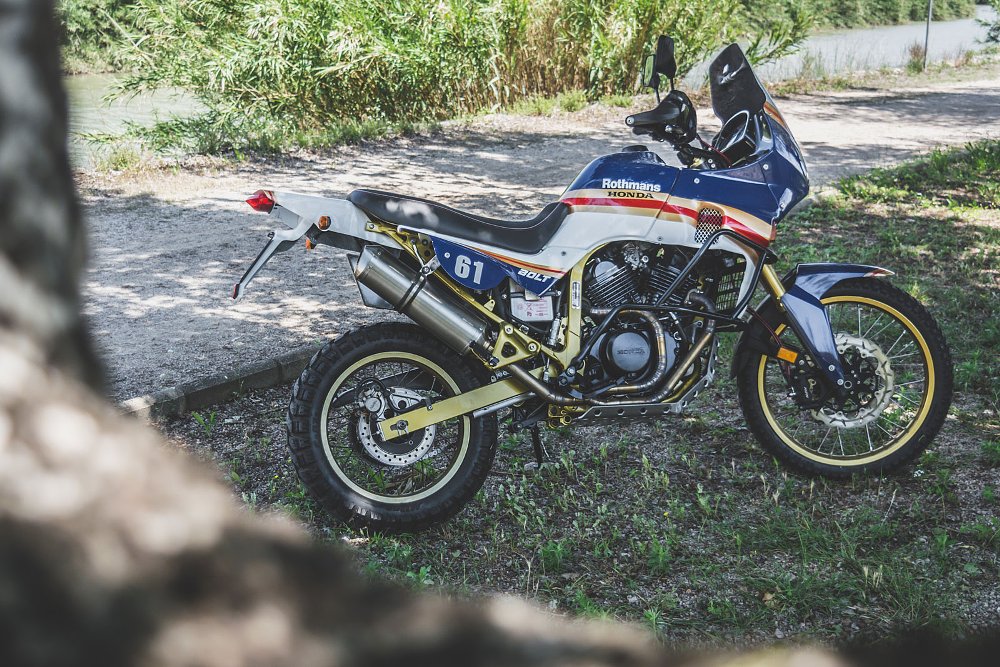
Special mention: Bolt Motor Co. 1992 Honda Transalp
Last month, a Common Tread reader (@daveinva) asked in the comments if anyone was customizing ADV bikes. So, to put that query to rest, here's one from Bolt Motor Co. in Spain.
Based on a '92 Honda Transalp, this build was undertaken for an owner who wanted the bike set up for everyday riding but looking like a Dakar champion. Adrián Campos and his Bolt Motor Co. team gladly accepted the challenge and turned the run-of-the-mill dual-sport into a neck-wrenching head turner.
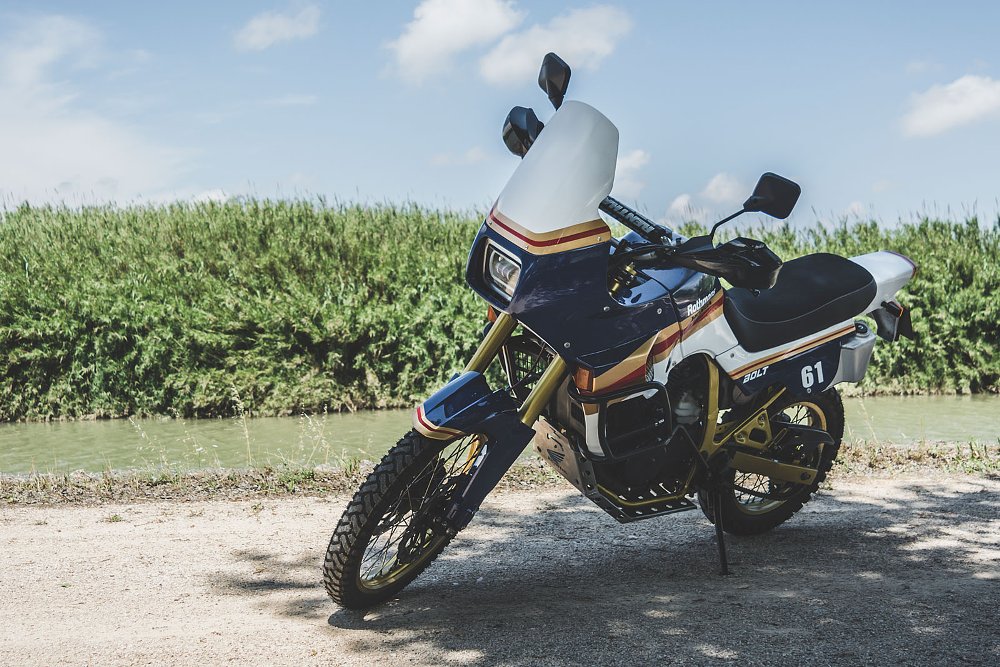
To prep the Transalp as a regular commuter, Bolt focused their efforts on handling and reliability. As a result, the bike is now sporting a retrofitted 2020 Africa Twin Showa front end complete with Brembo Gold calipers and twin floating discs. To balance out the suspension upgrades the rear end is sporting a matching Showa monoshock. Appropriately named Mitas E-07 Enduro Trail DAKAR tires cover the rims and offer the perfect mix of style and performance.
Engine work on this project was limited to a thorough service, but Bolt freed up the intake and added a custom two-into-one exhaust system and Arrow muffler for a little extra oomph.
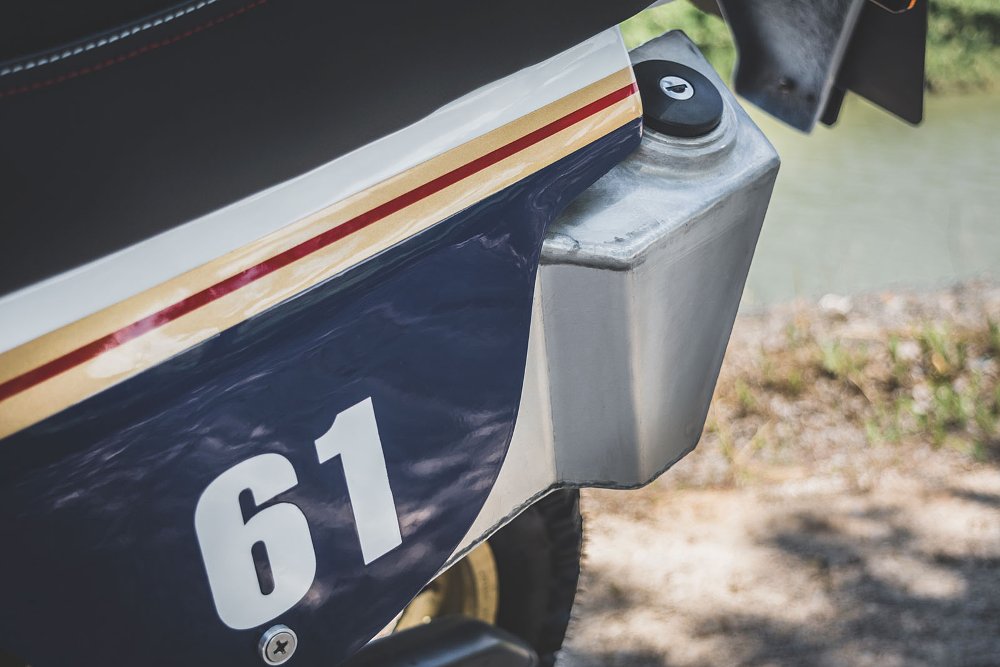
The Transalp has also received a few modern upgrades in the form of a complete electronics overhaul and the fitment of LED lighting. For improved long-haul comfort, they've installed a high-rise handlebar, heated grips, a custom upholstered seat with gel inserts, and Puig footrests. Bolt has even extended the Transalp's range by fitting the bike with a supplementary four-liter (one-gallon) custom fuel tank that's tucked neatly under the tail.
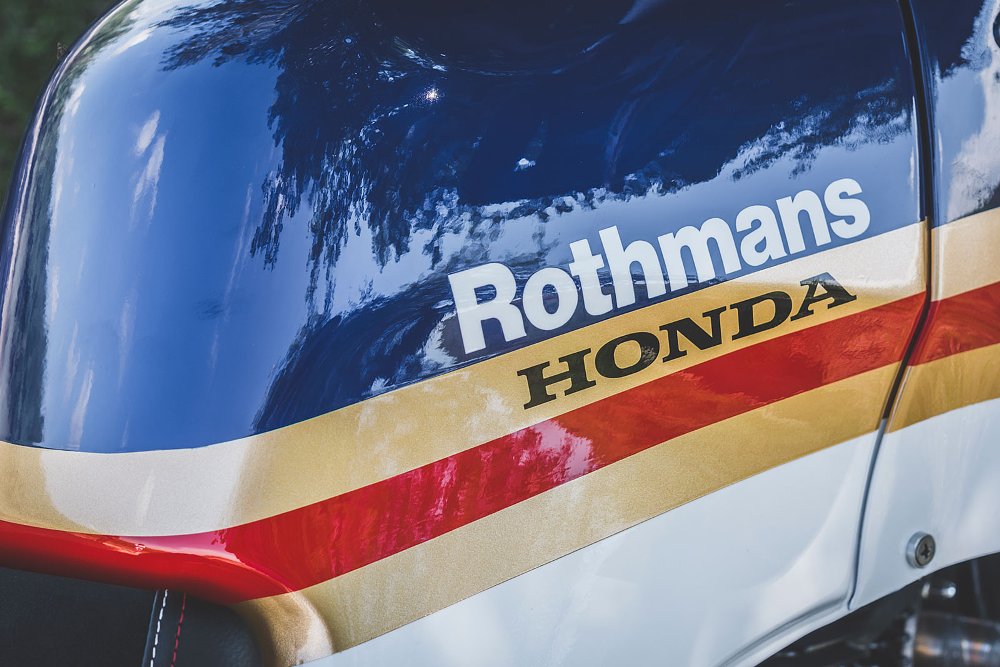
The rest of this build was focused on cosmetics and the new look is a hat tip to Honda's Dakar triumphs. In 1986, the Japanese manufacturer celebrated its first Dakar win with the Rothmans-sponsored NXR750. In recognition of this, the bike has been painted in 1980s Rothmans-themed livery and it suits the Transalp to a T.


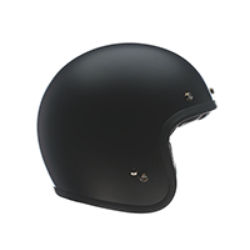

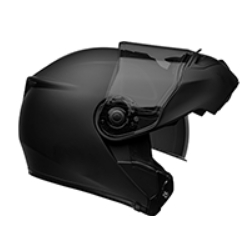

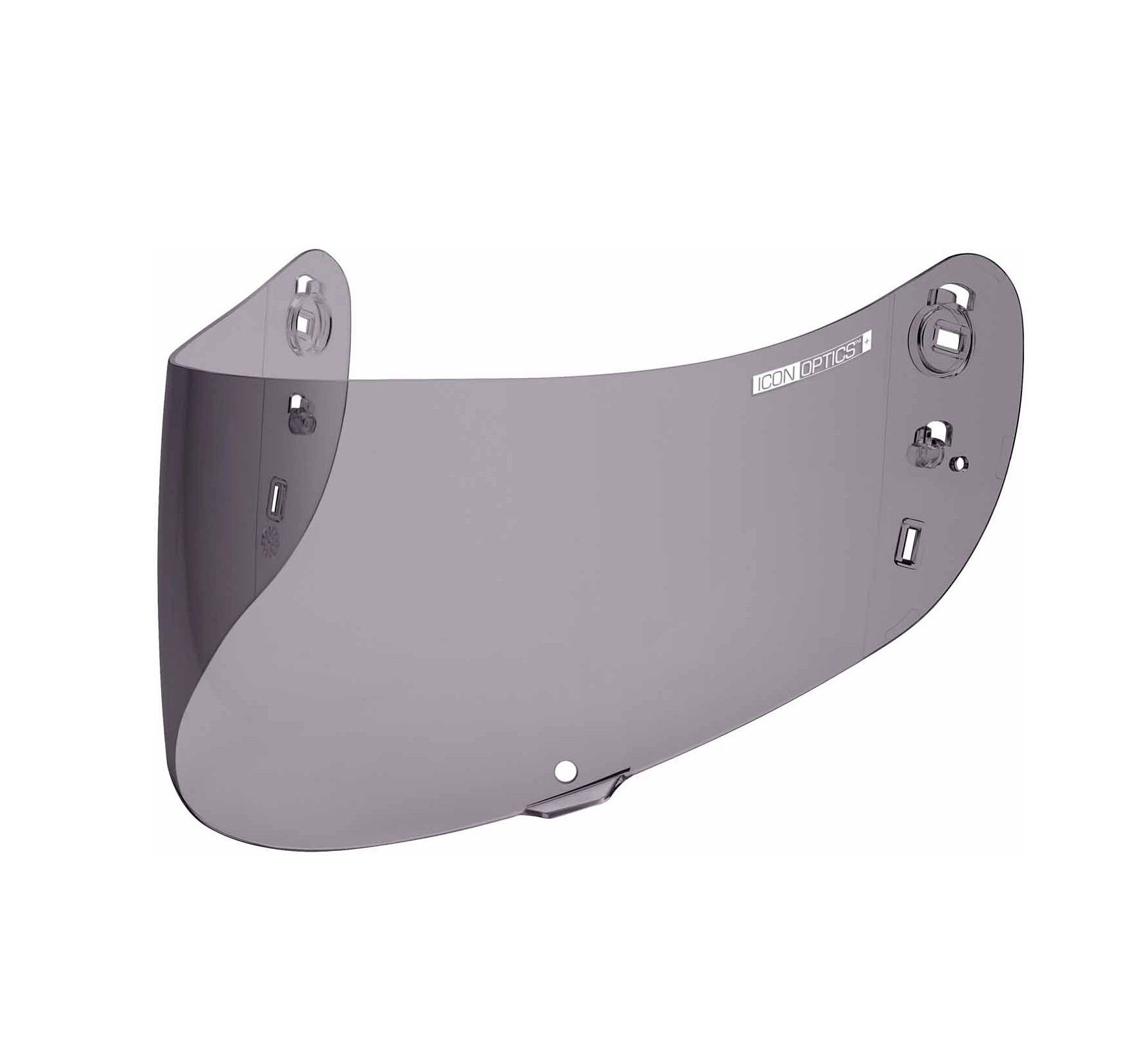
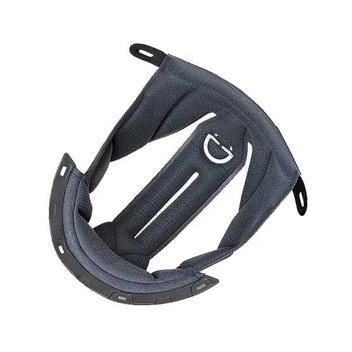
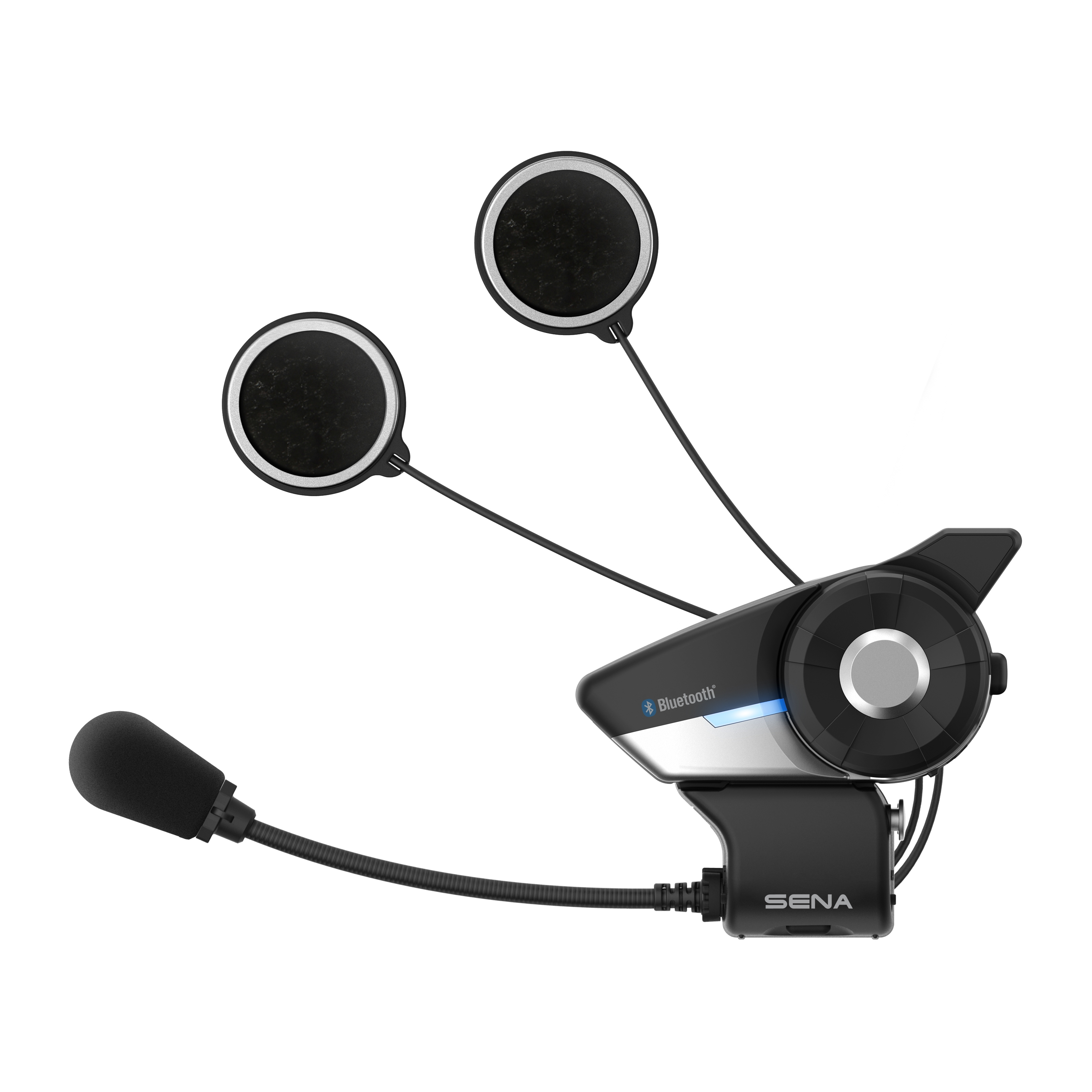
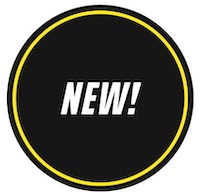

 Membership
Membership






